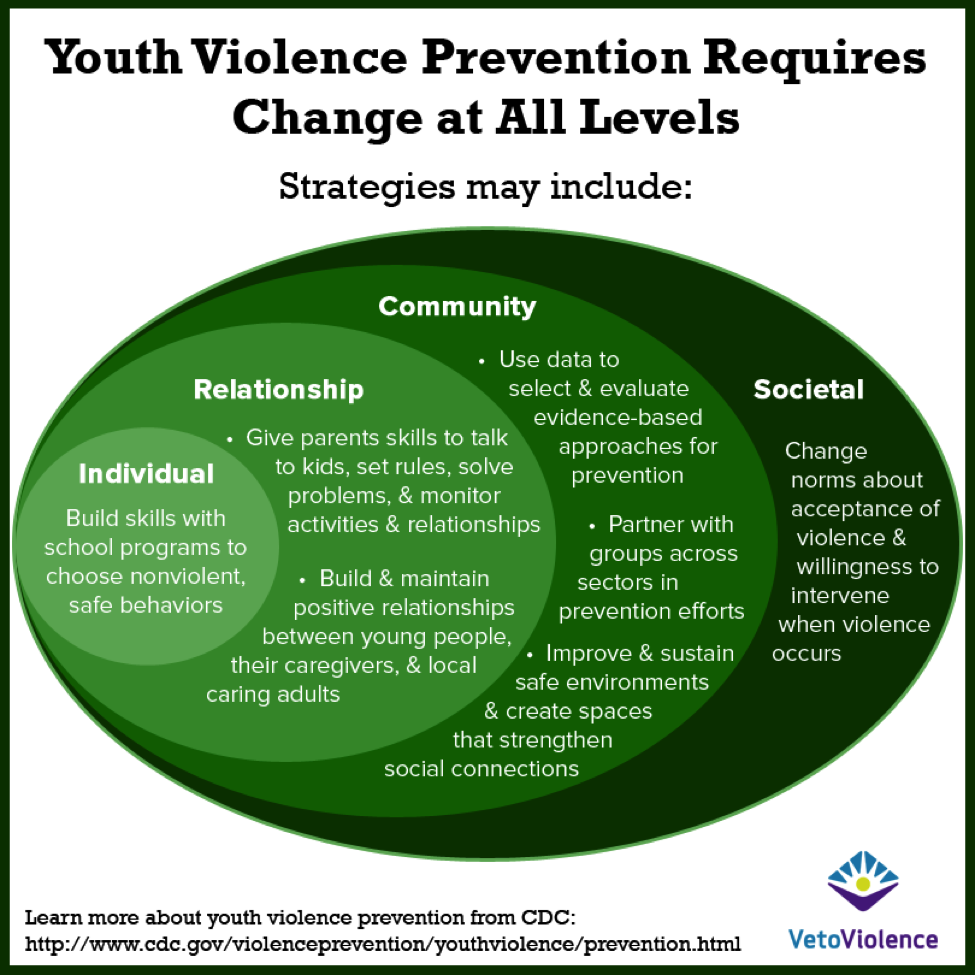This is the second in a four-part series on gun violence prevention in Philadelphia. The series was created to recognize National Gun Violence Awareness Month, which promotes education and action to end gun violence. Part one, Stopping gun violence in Philadelphia, was published on June 6.
Gun violence is a public health issue
The health department’s Division of Chronic Disease and Injury Prevention (CDIP), along with the Centers for Disease Control and Prevention (CDC), understands that gun violence is a public health issue. We know that because violence:
- Negatively impacts physical, mental, emotional, and social well-being long after an act of violence
- Impacts individuals, communities, and entire cities
- Is the result of individual, community, social, and political factors
- Most importantly, can be prevented by taking a public health approach
Our approach to gun violence
The public health approach to gun violence prevention is rooted in science and methods that are based on evidence. Our approach explores issues that shape the public’s health and the world around us.
The public health approach has 4 steps.
- First, we define the problem with community and with data.
- Then, we identify risk factors, those factors that increase the chances of gun violence, and protective factors, those factors that reduce the likelihood for gun violence.
- Next, we develop and test prevention strategies that address the problem.
- Finally, we promote the strategies that work.
Let’s break it down
When we talk about prevention in public health, we break it down into three layers: primary, secondary, and tertiary prevention.
- Primary prevention focuses on proactive measures, or measures that can be taken ahead of time to prevent diseases from ever occurring.
- Secondary prevention emphasizes the significance of identifying diseases in their early stages, before symptoms appear.
- Tertiary prevention, the third layer, aims to enhance the quality of life for people living with chronic conditions while minimizing the impact of diseases.
When it comes to gun violence, we believe prevention efforts should include primary prevention, acting before violence occurs. We take preventive measures by using data to monitor trends and identify risk factors and protective factors, and implement strategies to address social determinants, or factors, that impact health and violence.
Primary prevention is a powerful strategy for violence prevention because it addresses the root causes of violence. For example, a primary preventative measure is repairing an old, run-down park. Renewing the park can create a safer environment for social gatherings, taking a walk, and other physical activities. It becomes a place to fulfill people’s social, emotional, and physical needs. For more information on the impact of primary prevention measures, check out Safe States’ Mapping Out IVP – Working Upstream.
Social factors can impact your health
In public health, we often talk about social determinants of health. What we’re talking about when we talk about social determinants are everyday social factors that can impact someone’s health. The CDC defines social determinants as the conditions in which people are born, grow, work, live, and age. They also include broader forces and systems that shape our everyday lives and living conditions. The five major social determinants of health are:
- Education
- Healthcare
- Neighborhood, and the built environment, which includes buildings, streets, parks, transportation systems, and other elements that make up the places where we live and work
- Social and community context, which refers to the social, cultural and physical environment where people live, work, and interact with each other
- Economic stability
In public health, we promote health equity by improving social determinants of health.
What are social determinants of violence?
Social determinants can be named for specific public health topics, such as gun violence. The social determinants of violence are conditions that can help reduce the risk of gun violence. They include neighborhood safety and good quality housing, employment opportunities, and trauma-informed resources that help people and organizations recognize, assess, and address trauma in various settings, including healthcare, schools, and communities. Understanding the determinants of violence can help inform policies and social norms to reduce gun violence.
Public health issues are affected by many factors
To understand how health is affected at different levels, let’s take a look at a social-ecological model. In this model, the innermost level is the individual. From there, it expands to relationships, our personal interactions. Beyond that, we have the level of community, which includes our neighborhood environments. The last level is societal, which includes policies and cultural norms.
The social-ecological model helps us see how violence and other public health issues are not only individual but are affected by many factors. Here’s an example of the social-ecological model from the CDC on youth violence prevention:

CDIP uses a variety of strategies and practices to reach the most people possible so that we can prevent violence in our communities. By using methods, data, and group partnerships to uncover and target root causes of violence, our work promotes the health of all Philadelphians.
Be sure to join us on Friday, June 20, for part three in our four-part series, when we discuss city planning and the environment, and their connection to gun violence, education, and health.








 English (US) ·
English (US) ·